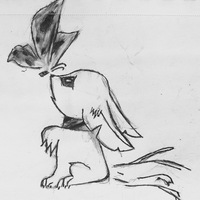
Зачем смотрят на состояние глаз при обмороке?
 0
0
 0
0
Ответы на вопрос
 Внимание! Ответы на вопросы дают живые люди. Они могут содержать ошибочную информацию, заблуждения, а также ответы могут быть сгенерированы нейросетями. Будьте внимательны. Если вы уверены, что ответ неверный, нажмите кнопку "Пожаловаться" под ответом.
Внимание! Ответы на вопросы дают живые люди. Они могут содержать ошибочную информацию, заблуждения, а также ответы могут быть сгенерированы нейросетями. Будьте внимательны. Если вы уверены, что ответ неверный, нажмите кнопку "Пожаловаться" под ответом.

Смотрят, есть ли реакция зрачка на свет или нет. Если да, то все хорошо с человеком. если нет, то плохо
 0
0
 0
0

Ответ:
Объяснение:
Они смотрят в глаза если у человека есть свет в глазах значит всё хорошо, если нет света в глазах значит всё плохо
 0
0
 0
0

Why do they look at the condition of the eyes during fainting?
When someone faints, medical professionals often assess the condition of the eyes as part of their evaluation. This is because the appearance and movement of the eyes can provide important clues about the underlying cause of the fainting episode. By examining the eyes, healthcare providers can gather information about the person's neurological function and potentially identify any abnormalities or signs of specific conditions.
Here are a few reasons why the condition of the eyes is observed during fainting:
1. Assessing consciousness: The eyes can provide insights into a person's level of consciousness. Healthcare providers may check if the person's eyes are open or closed, and if they are responsive to stimuli such as light or touch. This helps determine if the person is fully conscious or experiencing altered consciousness.
2. Checking for nystagmus: Nystagmus refers to involuntary eye movements that can occur during certain medical conditions or neurological disorders. Observing the eyes for any abnormal or rapid movements can help identify the presence of nystagmus, which may be indicative of an underlying problem.
3. Detecting signs of seizure activity: Fainting can sometimes be accompanied by a seizure or convulsive activity. Healthcare providers may look for signs of abnormal eye movements, such as rolling or deviation, which can suggest the presence of a seizure.
4. Evaluating pupillary response: The size and reaction of the pupils can provide information about the function of the autonomic nervous system. Healthcare providers may check if the pupils are equal in size, react to light appropriately, or show any signs of abnormal dilation or constriction. These observations can help identify potential causes of fainting, such as autonomic dysfunction or certain medications.
5. Assessing signs of trauma: In some cases, fainting may be caused by a head injury or trauma. Healthcare providers may examine the eyes for signs of injury, such as blood in the eye (hyphema) or bruising around the eyes (periorbital ecchymosis). These findings can help determine if trauma played a role in the fainting episode.
It's important to note that the specific observations made during a fainting episode may vary depending on the individual case and the healthcare provider's clinical judgment. The examination of the eyes is just one component of a comprehensive assessment to determine the cause of fainting.
 0
0
 0
0
Похожие вопросы
Топ вопросов за вчера в категории Биология
Последние заданные вопросы в категории Биология
-
Математика
-
Литература
-
Алгебра
-
Русский язык
-
Геометрия
-
Английский язык
-
Химия
-
Физика
-
Биология
-
Другие предметы
-
История
-
Обществознание
-
Окружающий мир
-
География
-
Українська мова
-
Информатика
-
Українська література
-
Қазақ тiлi
-
Экономика
-
Музыка
-
Право
-
Беларуская мова
-
Французский язык
-
Немецкий язык
-
МХК
-
ОБЖ
-
Психология
-
Физкультура и спорт
-
Астрономия
-
Кыргыз тили
-
Оʻzbek tili
























